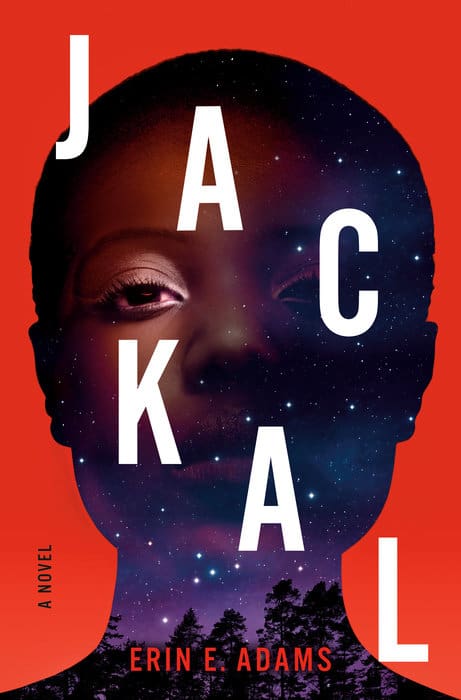
Synopsis:
It’s watching.
Liz Rocher is coming home . . . reluctantly. As a Black woman, Liz doesn’t exactly have fond memories of Johnstown, Pennsylvania, a predominantly white town. But her best friend is getting married, so she braces herself for a weekend of awkward, passive-aggressive reunions. Liz has grown, though; she can handle whatever awaits her. But on the night of the wedding, somewhere between dancing and dessert, the newlyweds’ daughter, Caroline, disappears—and the only thing left behind is a piece of white fabric covered in blood.
It’s taking.
As a frantic search begins, with the police combing the trees for Caroline, Liz is the only one who notices a pattern: A summer night. A missing girl. A party in the woods. She’s seen this before. Keisha Woodson, the only other Black girl in Liz’s high school, walked into the woods with a mysterious man and was later found with her chest cavity ripped open and her heart removed. Liz shudders at the thought that it could have been her, and now, with Caroline missing, it can’t be a coincidence. As Liz starts to dig through the town’s history, she uncovers a horrifying secret about the place she once called home. Children have been going missing in these woods for years. All of them Black. All of them girls.
It’s your turn.
With the evil in the forest creeping closer, Liz knows what she must do: find Caroline, or be entirely consumed by the darkness.
Review:
On Friday evening, I took a deep breath, and dived into “Jackal,” by Erin E Adams… only when I put it down for the last time did I exhale again. From its pulse-pounding mystery, to its heart-achingly beautiful and insightful prose- it’s seriously like poetry for the soul, it was everything I needed it to be. The short chapters are addictive and, were it up to me, I would have only left the world of Liz and Caroline to refill on snacks. For the record, I’d describe Jackal as horror adjacent- just enough grit and misery to cross into macabre territory. Either way, grab your deer-stalker hat, magnifying glass and perhaps a wooden pipe, and let’s go.
Elizabeth (Liz) returns to her hometown (very hesitantly) to attend the wedding of her best friend Mel, and her husband to be Garrett. As a black woman in America, she’s forced to navigate a society fraught with danger and prejudice, in which identity is a battleground. Perhaps this is a common theme for most small, mostly-white towns, but Johnstown has a history. A sinister presence lurks, shrouding the industrial town in mystery, and cloaking it with dread, even the shadows seem to whisper secrets of their own. Yet another black girl has disappeared into the depths of Johnstown’s woodlands, but this time it’s Mel’s little girl, Liz’s god-daughter, beloved Caroline.
“Where are the dogs? The human chains? The sweeps? They don’t fucking care,” Mel takes a moment. “It’s ’cause she’s a little Black girl, right?”
Through the lens of Liz, Adams explores the prejudices and casual racism that permeates every facet of Johnstown, and as I’m sure is fairly obvious, wider society. In the dark depths of the town’s forests, fear and hatred converge, and bigotry is manifested as this folkloric and violent figure. All of the characters are well-done. Nick in particular oozed with hatred and hostility like a leaky pen. The attitudes and thinly-veiled bigotry of some of the characters radiate off of the page like heat from a summer sidewalk. There’s also something interesting to be said about Liz’s mother, and Garrett, a certain cowardice and avoidance.
There’s plenty of flat-out scary moments, but what Adams executes the most effectively is the quiet and insidious hatred that bubbles within humanity- the sideways glances, coded language and systemic barriers. It’s a well-rounded novel of intrigue and introspection that forces us to reflect upon ourselves, and call out others. You should absolutely read Adam’s afterword once you’re done too.
“These aren’t random girls. A shadow calling their names isn’t a folktale. These girls were targeted.”
The prose, in conjunction with the short chapters, ensnares the readers in a web of deception and intrigue, this proceeds to tighten until the final page… which will leave you breathless. Particularly for a debut, it’s pretty damn good.
Let’s talk about the ending. It seems like Adams decided to take a quick detour into magical realism. In the last 80% it gets WEIRD, and stays that way. Fantasy and reality are blurred like a water-colour portrait left out in the rain, and I’m not sure if the product was an abstract masterpiece, or a mess. I’m still undecided as to whether it was the avant-garde twist I needed, or if I could have gone without, but I do know that it’s something I’d have liked to have known going in. You’re welcome.
If I’m raining on parades anyway, I’d also like to point out that I did have an inkling from quite early on which eventually proved to be true. Now, the murderer may have been on my radar, but, in fairness, the majority of twists and turns were not, and I had a fun time regardless.
Look, you’ve got suspense, a splash of the supernatural, and social commentary – it leaves you unsettled, and in need of more. With each page turned, Adams peals back another layer of society’s standoffish mask, revealing the festering wounds beneath- let this novel linger in your mind. It’s a manifesto for change, a rallying cry for empathy… and a damn good book.








Leave a Reply